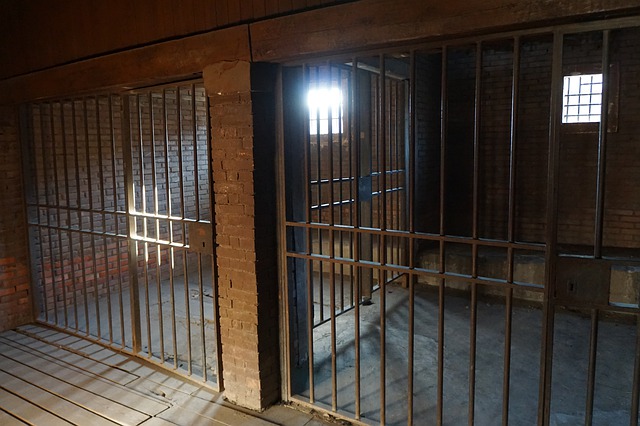Reaching the age of 50 can be a pivotal moment in life, especially when it comes to planning for retirement. If you haven’t started saving yet, don’t panic you’re not alone. Many people find themselves in this situation and realize that it’s time to take control of their financial future. With some smart strategies and determination, you can still build a nest egg that supports your desired lifestyle after work. The truth is, preparing for retirement isn’t just about money. It’s also about peace of mind. Imagine enjoying your golden years free from financial stress! Whether you’re dreaming of travel adventures or simply want to enjoy more time with loved ones, putting together a solid plan is crucial now more than ever. Let’s explore how you can set yourself up for success as you embark on this new chapter in your life.
Assessing Your Financial Situation: Current Savings, Investments, and Expenses
Before diving into retirement planning, take a close look at your financial landscape. Start by assessing your current savings. How much do you have tucked away in various accounts? Next, analyze your investments. Are they diversified enough to weather market fluctuations? Knowing where you stand is crucial for setting the right course moving forward. Don’t forget about expenses. Track them meticulously. This will help identify areas where you can cut back and save more for retirement.

Setting Realistic Retirement Goals
Setting realistic retirement goals is essential, especially if you’re starting to plan later in life. Begin by assessing what you truly want your retirement to look like. Do you envision traveling? Spending time with family? Or perhaps pursuing hobbies? Once you have a vision, consider how much money you’ll need to achieve it. Research average costs for healthcare, housing, and leisure activities relevant to your lifestyle.
Strategies for Catching up on Retirement Savings
Increasing contributions to your retirement accounts can make a significant difference. If you have an employer-sponsored plan, consider maximizing your contributions. Many plans allow catch-up contributions for those over 50, giving you the chance to boost your savings significantly. Starting a side hustle or part-time job is another effective strategy. Use skills or hobbies that excite you and explore opportunities in freelancing or consulting. The additional income can directly fund your retirement accounts.
Increasing Contributions to Retirement Accounts
One of the most effective ways to boost your retirement savings is by increasing contributions to your retirement accounts. If you have a 401(k) or an IRA, consider upping your monthly contributions. Start small if needed. Even adding a few extra dollars can make a significant difference over time thanks to compound interest. As you become more comfortable with this adjustment, gradually increase that amount. Check if your employer offers matching contributions. This is essentially free money and can help accelerate your savings growth significantly.

Starting a Side Hustle or Part-Time Job
Starting a side hustle or part-time job can be an empowering step toward bolstering your retirement savings. Not only does it provide additional income, but it also allows you to explore passions that may have been sidelined. Consider what skills or hobbies you possess. Freelancing, consulting, or even selling handmade crafts online are all viable options. Platforms like Etsy and Upwork make it easier than ever to connect with potential clients or customers. If you’re looking for something less entrepreneurial, part-time positions in retail or hospitality might fit the bill. These roles often come with flexible hours, allowing you to work around existing commitments while bringing in extra cash.
Downsizing or Relocating
Downsizing or relocating can be a smart move as you plan for retirement. It often means less maintenance and lower utility costs, freeing up funds for savings. Consider smaller homes or apartments that provide the essentials without excess space. This shift allows you to simplify your life while saving money. Relocation might also offer opportunities. Moving to a more affordable area with a lower cost of living can stretch your retirement savings further. Plus, quieter locations may enhance your quality of life.
Creating a Budget and Cutting Unnecessary Expenses
Creating a budget is essential, especially when you’re focusing on retirement. Start by tracking your income and expenses for a month. This gives you insight into where your money goes. Next, categorize your spending. Identify fixed costs like rent or mortgage, utilities, and groceries versus discretionary spending such as dining out or entertainment. Once you’ve pinpointed these areas, it’s time to make adjustments. Are there subscriptions you don’t use? Consider canceling them. Small changes add up over time.
In Conclusion
Planning for retirement after 50 might seem daunting, especially if you feel like you’ve missed the boat. However, it’s never too late to take control of your financial future. Start by taking a close look at your current situation. Knowing where you stand with savings and expenses is crucial.…





 Without a doubt, the first thing people should look for in a loan is the interest rate. So, savvy borrowers often compare rates from multiple financial institutions to ensure they’re getting the best deal possible. One of the best niche lenders you need to check out is the
Without a doubt, the first thing people should look for in a loan is the interest rate. So, savvy borrowers often compare rates from multiple financial institutions to ensure they’re getting the best deal possible. One of the best niche lenders you need to check out is the  When it comes to financing your dream boat, exploring down payment options is an essential step in finding the perfect boat loan. A down payment is basically a lump sum of the money you pay upfront towards the purchase price of the boat. It can significantly impact your loan terms and monthly payments. One option to consider is making a larger down payment. By putting more money down, you reduce the principal amount borrowed and potentially lower your interest rate. This can save you money over the life of your loan. Additionally, some lenders may offer flexible down payment options, allowing you to customize the amount based on what works best for your financial situation. Whether it’s a fixed percentage of the purchase price or a specific dollar amount, be sure to discuss these options with potential lenders.
When it comes to financing your dream boat, exploring down payment options is an essential step in finding the perfect boat loan. A down payment is basically a lump sum of the money you pay upfront towards the purchase price of the boat. It can significantly impact your loan terms and monthly payments. One option to consider is making a larger down payment. By putting more money down, you reduce the principal amount borrowed and potentially lower your interest rate. This can save you money over the life of your loan. Additionally, some lenders may offer flexible down payment options, allowing you to customize the amount based on what works best for your financial situation. Whether it’s a fixed percentage of the purchase price or a specific dollar amount, be sure to discuss these options with potential lenders.

 The first step to saving for retirement is setting goals. You must determine how much money you will need to maintain your lifestyle once you retire. Consider factors such as your current lifestyle, expected healthcare costs, and potential sources of income such as social security or pensions.
The first step to saving for retirement is setting goals. You must determine how much money you will need to maintain your lifestyle once you retire. Consider factors such as your current lifestyle, expected healthcare costs, and potential sources of income such as social security or pensions. If you are employed, your employer may offer retirement benefits such as a 401(k) or pension plan. Take advantage of these benefits by contributing as much as you can.
If you are employed, your employer may offer retirement benefits such as a 401(k) or pension plan. Take advantage of these benefits by contributing as much as you can.





 Consulting with a financial advisor can be another great way to ensure you make the most of your retirement
Consulting with a financial advisor can be another great way to ensure you make the most of your retirement 

 Applying for too many loans can have a negative impact on a borrower’s credit score. When a lender checks a borrower’s credit, it can lower their score. Borrowers should only apply for loans they are serious about and believe they have a good chance of being approved for.
Applying for too many loans can have a negative impact on a borrower’s credit score. When a lender checks a borrower’s credit, it can lower their score. Borrowers should only apply for loans they are serious about and believe they have a good chance of being approved for.

 Earning extra money is a great way to grow your savings. There are many ways to do this, such as starting a blog, doing freelance work, or becoming a pet sitter. Once you have earned extra money, you can put it into your savings account. Everyone wants to have money, but with the ongoing increase in prices, it is getting difficult to save. Keeping the tips above in mind will help you manage your finances better, allowing you to have a comfortable future. Alternatively, you can work with a financial advisor to help you make the most of your savings.…
Earning extra money is a great way to grow your savings. There are many ways to do this, such as starting a blog, doing freelance work, or becoming a pet sitter. Once you have earned extra money, you can put it into your savings account. Everyone wants to have money, but with the ongoing increase in prices, it is getting difficult to save. Keeping the tips above in mind will help you manage your finances better, allowing you to have a comfortable future. Alternatively, you can work with a financial advisor to help you make the most of your savings.…

 One final tip to help you get approved for a personal loan is increasing your income. If you show that you have a steady income stream, it will make you look like a more attractive borrower to lenders. There are a few different ways to do this, such as getting a second job or increasing your hours at your current job.
One final tip to help you get approved for a personal loan is increasing your income. If you show that you have a steady income stream, it will make you look like a more attractive borrower to lenders. There are a few different ways to do this, such as getting a second job or increasing your hours at your current job.

 A REIT is an enterprise that operates, owns, or finances income-producing real estate. By law, REITs are required to distribute at a minimum of 90% of their taxable income to shareholders in the form of dividends. That makes them an attractive investment for people who want to earn passive income from real estate. REITs can be traded on major stock exchanges or purchased through real estate investment trusts. There are also many different types of REITs, such as office REITs, residential REITs, retail REITs, and more. These are three of the most popular retirement plans. Of course, many other options are available, such as annuities, pensions, and life insurance.
A REIT is an enterprise that operates, owns, or finances income-producing real estate. By law, REITs are required to distribute at a minimum of 90% of their taxable income to shareholders in the form of dividends. That makes them an attractive investment for people who want to earn passive income from real estate. REITs can be traded on major stock exchanges or purchased through real estate investment trusts. There are also many different types of REITs, such as office REITs, residential REITs, retail REITs, and more. These are three of the most popular retirement plans. Of course, many other options are available, such as annuities, pensions, and life insurance.
 First, you will need to determine the value of your home. This can be done by looking at recent sales of homes in your area that are similar in size and features. Once you have an idea of how much your home is worth, you will need to find out the assessed value. This information can be found on your local tax assessor’s website, so make sure to check them thoroughly. Remember that asking questions is allowed, and you should ask if there is anything that you don’t know, lest you want to complicate things even further.
First, you will need to determine the value of your home. This can be done by looking at recent sales of homes in your area that are similar in size and features. Once you have an idea of how much your home is worth, you will need to find out the assessed value. This information can be found on your local tax assessor’s website, so make sure to check them thoroughly. Remember that asking questions is allowed, and you should ask if there is anything that you don’t know, lest you want to complicate things even further.
 One of the biggest reasons your business needs HR payroll software is because it keeps you compliant with government regulations. With the right system, you can track employee hours and pay them accordingly without worrying about any legal issues.
One of the biggest reasons your business needs HR payroll software is because it keeps you compliant with government regulations. With the right system, you can track employee hours and pay them accordingly without worrying about any legal issues. With HR payroll software, you’ll be able to see how your employees are performing and which ones may need some extra training or motivation. You can also use it as an opportunity for rewards like bonuses if someone does well on a project.
With HR payroll software, you’ll be able to see how your employees are performing and which ones may need some extra training or motivation. You can also use it as an opportunity for rewards like bonuses if someone does well on a project. One of the biggest problems with
One of the biggest problems with 
 One of the best ways to determine if a credit repair company is reputable or not is by finding out how long they’ve been in business. A company that has been around for a while is more likely to be reliable and have experience repairing credit scores. Avoid companies new to the scene, as they may not have the necessary skills or expertise to fix your credit.
One of the best ways to determine if a credit repair company is reputable or not is by finding out how long they’ve been in business. A company that has been around for a while is more likely to be reliable and have experience repairing credit scores. Avoid companies new to the scene, as they may not have the necessary skills or expertise to fix your credit. Before hiring a credit repair company, you should ask them for their guarantees. Reputable companies stand by their services and will offer some kind of guarantee in writing if they cannot fix your credit score within the agreed upon time-frame. Ensure that any such warranty is included in the contract before signing it! You need to know what kinds of guarantees they offer. This way, you will have some protection if the company isn’t able to fix your credit score.
Before hiring a credit repair company, you should ask them for their guarantees. Reputable companies stand by their services and will offer some kind of guarantee in writing if they cannot fix your credit score within the agreed upon time-frame. Ensure that any such warranty is included in the contract before signing it! You need to know what kinds of guarantees they offer. This way, you will have some protection if the company isn’t able to fix your credit score.



 Most people probably invest in digital currencies due to the prospects of getting huge profits. Of course, money is the primary motivator why people get into any business, and if any option offers better returns, many investors will want to try it.Although cryptocurrencies have not been around for long, they have the potential for higher returns than most options for investing, including the stock exchange.
Most people probably invest in digital currencies due to the prospects of getting huge profits. Of course, money is the primary motivator why people get into any business, and if any option offers better returns, many investors will want to try it.Although cryptocurrencies have not been around for long, they have the potential for higher returns than most options for investing, including the stock exchange. No matter your choice of digital currencies to invest in, for example,
No matter your choice of digital currencies to invest in, for example, 
 Targeting focuses on various marketing efforts on a defined group known as a target market. It is crucial to understand that the selected market segments have common interests and characteristics. Most marketing strategies and advertising focus on a target market, becoming more effective, efficient, and affordable.
Targeting focuses on various marketing efforts on a defined group known as a target market. It is crucial to understand that the selected market segments have common interests and characteristics. Most marketing strategies and advertising focus on a target market, becoming more effective, efficient, and affordable. Market segmentation is the process of breaking down a market and categorizing customers with similar attitudes, behaviors, and characteristics. It is the best marketing process that helps most businesses to know their customer needs, sales, advertising, and optimizing their marketing.
Market segmentation is the process of breaking down a market and categorizing customers with similar attitudes, behaviors, and characteristics. It is the best marketing process that helps most businesses to know their customer needs, sales, advertising, and optimizing their marketing.




 The managed forex account offers asset and exposure that is completely different from the bonds and stocks. The investors will be transitioning from traders to investors by choosing managed forex accounts. It is of great benefit since all the investor has to do is manage and control the investment instead of indulging in tiresome trading day-in-day-out. With this, they will be able to save the investors’ time.
The managed forex account offers asset and exposure that is completely different from the bonds and stocks. The investors will be transitioning from traders to investors by choosing managed forex accounts. It is of great benefit since all the investor has to do is manage and control the investment instead of indulging in tiresome trading day-in-day-out. With this, they will be able to save the investors’ time. People invest their money to enable them to generate huge returns. Investing in the right field will help you realize the huge profit gains. However, some investors need to be very careful whenever they are putting their money in any investment option.
People invest their money to enable them to generate huge returns. Investing in the right field will help you realize the huge profit gains. However, some investors need to be very careful whenever they are putting their money in any investment option.


 Competent
Competent

 Among all paid search marketing options, Google Ads scripts have the largest market share, thereby accounting for the most traffic. When you are just starting with your ads campaign, it is no doubt that this option is the best way to begin with. While there are also more competitions using this option, your chances of getting your own share of the market are more robust than anywhere else. The secret of a successful ads campaign through Google Ads scripts is to continually optimize your ads campaign, which will inevitably result in a high return of investment.
Among all paid search marketing options, Google Ads scripts have the largest market share, thereby accounting for the most traffic. When you are just starting with your ads campaign, it is no doubt that this option is the best way to begin with. While there are also more competitions using this option, your chances of getting your own share of the market are more robust than anywhere else. The secret of a successful ads campaign through Google Ads scripts is to continually optimize your ads campaign, which will inevitably result in a high return of investment.


 Get Commercial Auto Insurance
Get Commercial Auto Insurance
 You have probably heard about stock market umpteenth times, but you have never stopped to find it about what it is all about. If you did not know, this is one of the areas that can give your money back within the shortest time possible. You just need to make sure that you get the right information before you fully immerse yourself into the business. If you have someone who has been in the business before you, then it will be prudent if you talk to them and get to know what you need to before you start off. You can also check out Questrade reviews and get to learn more about the entire process of investing in the stock market.
You have probably heard about stock market umpteenth times, but you have never stopped to find it about what it is all about. If you did not know, this is one of the areas that can give your money back within the shortest time possible. You just need to make sure that you get the right information before you fully immerse yourself into the business. If you have someone who has been in the business before you, then it will be prudent if you talk to them and get to know what you need to before you start off. You can also check out Questrade reviews and get to learn more about the entire process of investing in the stock market. In addition to the affiliate marketing and the stock market, you can also decide to invest in the real estate. People are moving to the urban centers in search of green pastures, and you can be sure that an investment in real estate will never disappoint. You just need to make sure that you choose the right location for your real estate business. In addition to that, hiring that right real estate managers will go a long way in ensuring that you take your business to the next level.…
In addition to the affiliate marketing and the stock market, you can also decide to invest in the real estate. People are moving to the urban centers in search of green pastures, and you can be sure that an investment in real estate will never disappoint. You just need to make sure that you choose the right location for your real estate business. In addition to that, hiring that right real estate managers will go a long way in ensuring that you take your business to the next level.…






 This is one of the easiest ways you can consider if you want to make money online. You can still do this both in active and passive income methods. For instance, if you are an entrepreneur, you can create a site or look for an existing website that advertises the same product you are selling. Most people consider shopping online because it is quick and more straightforward. Therefore, by doing this, you will receive a lot of customers and end up selling your products quickly.
This is one of the easiest ways you can consider if you want to make money online. You can still do this both in active and passive income methods. For instance, if you are an entrepreneur, you can create a site or look for an existing website that advertises the same product you are selling. Most people consider shopping online because it is quick and more straightforward. Therefore, by doing this, you will receive a lot of customers and end up selling your products quickly. If you want to make money online, you can also do this by setting up an email software and make sure that you create a lead magnet that you can efficiently use in your sales funnel. After doing this, ensure that you build up that list. You should aim to have a list of many subscribers for you to earn a lot of money. These, therefore, are just some of the way you can make money online.…
If you want to make money online, you can also do this by setting up an email software and make sure that you create a lead magnet that you can efficiently use in your sales funnel. After doing this, ensure that you build up that list. You should aim to have a list of many subscribers for you to earn a lot of money. These, therefore, are just some of the way you can make money online.…
 Important Areas
Important Areas Observe how Altcoins are Traded
Observe how Altcoins are Traded
 Payday loans are easy to apply. You don’t have to visit a bank or go to any financial institutions. You can do everything from the comfort of your house. All you have to do is to sit down and fill some information. If all the info is right, then you will be approved for the loan, and you will get your money in the shortest time possible.
Payday loans are easy to apply. You don’t have to visit a bank or go to any financial institutions. You can do everything from the comfort of your house. All you have to do is to sit down and fill some information. If all the info is right, then you will be approved for the loan, and you will get your money in the shortest time possible. When in an emergency situation, you need to make sure that you get money in the fastest way possible. Loan approvals take time, and in an emergency situation, you cannot wait for weeks for your money to be deposited into your account. Payday loans can be processed within 24 hours, and you will get money to take care of your needs.
When in an emergency situation, you need to make sure that you get money in the fastest way possible. Loan approvals take time, and in an emergency situation, you cannot wait for weeks for your money to be deposited into your account. Payday loans can be processed within 24 hours, and you will get money to take care of your needs.
 Many people find the health insurance through their employer. If you are employed, and your company provides insurance cover, you will not need to go for the government insurance or search for insurance cover from the other channels.
Many people find the health insurance through their employer. If you are employed, and your company provides insurance cover, you will not need to go for the government insurance or search for insurance cover from the other channels. Last but not least, compare the out of pocket costs. When you seek medical attention at a facility of your choice the
Last but not least, compare the out of pocket costs. When you seek medical attention at a facility of your choice the 

 Legacy planning is never an easy task for most business owners. You should ask yourself questions and be ready to take unpleasant decisions for the good of your company. This is why business leaders ignore legacy planning until it is late.
Legacy planning is never an easy task for most business owners. You should ask yourself questions and be ready to take unpleasant decisions for the good of your company. This is why business leaders ignore legacy planning until it is late.

 This is another company liquidation type whose purpose is to preserve company assets which may be at risk. In this case, a good liquidator is appointed to protect the business’ financial position. On the other hand, the petition liquidation is considered by the court.
This is another company liquidation type whose purpose is to preserve company assets which may be at risk. In this case, a good liquidator is appointed to protect the business’ financial position. On the other hand, the petition liquidation is considered by the court.